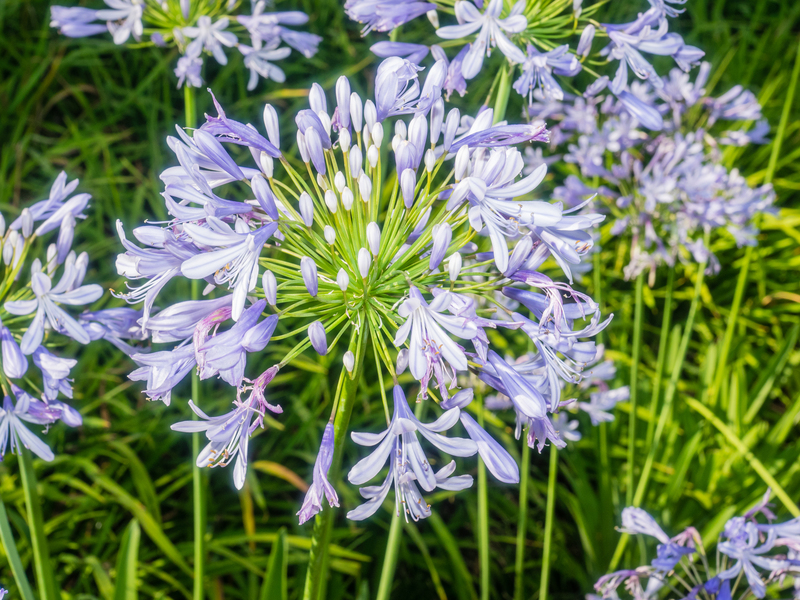Transform Your Garden with Exquisite Hedge Trimming Shapes
Posted on 26/08/2025
Transform Your Garden with Exquisite Hedge Trimming Shapes
Enhancing your outdoor space with artfully sculpted hedges is more than just gardening -- it's a creative journey that personalizes your landscape. Explore the world of hedge trimming shapes and learn how to elevate your garden to a stunning, envy-worthy sanctuary.

Why Prioritize Hedge Trimming Shapes?
Homeowners and garden enthusiasts alike cherish a well-manicured garden. Among the many aspects of landscaping, hedge shaping stands out as an eye-catching feature. Hedge trimming is more than maintenance; it's an opportunity for creative expression. Transform your garden with exquisite hedge trimming shapes to:
- Enhance curb appeal and property value
- Create unique focal points and pathways
- Impress guests and neighbors
- Improve plant health and growth
- Protect privacy and create natural walls or boundaries
Understanding the Art of Hedge Shaping
The tradition of hedge trimming, also known as topiary art, dates back centuries. From classic European gardens to modern landscapes, shaping hedges have been used to display elegance and structure in outdoor living spaces. Transforming your garden with creative hedge trimming designs requires the right technique, imagination, and a bit of patience.
Essential Tools for Sculpting Exquisite Hedge Shapes
Before diving into complex forms, you need the proper equipment. Investing in quality tools will make your hedge trimming experience both efficient and enjoyable. Here's what you'll need:
- Hand Shears - Perfect for precision trimming and finishing touches.
- Electric or Gas Hedge Trimmers - Best for larger hedges and basic shaping.
- Loppers and Pruners - Essential for thick branches and rejuvenation.
- String, Stakes, or Frames - Help guide symmetrical or intricate designs.
- Measuring Tape and Levels - Ensure accurate heights and evenness.
- Protective Gloves and Eye Protection - Safety first!
*Tip:* Clean and sharpen your hedge trimming tools regularly for clean cuts and healthier plants.
Popular Hedge Trimming Shapes to Transform Your Garden
Unlock boundless creativity by experimenting with various shapes and designs. Transforming your garden with unique hedge trimming patterns starts with inspiration and a clear vision. Here are some timeless and modern hedge designs:
1. The Classic Geometric Approach
- Rectangular Hedges: Perfect for borders. Clean, flat tops and sides add formality to your garden.
- Square and Cubic Shapes: Create symmetry and modernity, ideal for low-maintenance gardeners seeking sophistication.
- Spirals and Cones: Commonly seen flanking entryways or lining walkways, offering dynamic visual interest.
- Globes and Spheres: Smooth, rounded forms that soften sharp corners and complement other landscape features.
2. Artistic and Whimsical Topiary
- Animal Topiary: From peacocks to elephants, these creative sculptures add a playful, magical element to gardens.
- Architectural Forms: Create abstract shapes or mimic gazebos, arches, and columns for dramatic effect.
- Letter Forms and Numbers: Personalize your garden entrance with initials or house numbers crafted in green.
3. Functional Hedge Trimming Styles
- Privacy Screens: Dense, tall hedges shaped to form natural fences, ideal for urban gardens or pool areas.
- Maze Hedges: Intricately designed passages, creating secret paths and a sense of wonder.
- Espaliers: Flat, two-dimensional growth against walls or fences, optimizing space with artistic flair.
4. Freeform and Naturalistic Styles
- Cloud Pruning: Soft, bubble-like domes that mimic drifting clouds, popular in Japanese and English gardens.
- Organic Waves: Undulating forms that evoke movement and harmony with the landscape.
- Layered Hedges: Varying heights and shapes combined for a dynamic, multi-dimensional effect.
Step-by-Step Guide: Achieving Exquisite Hedge Trimming Shapes
Ready to transform your garden with beautiful hedge shaping? Follow these steps for professional-looking results:
Step 1: Plan Your Design
- Sketch your idea on paper, considering the space, light, and other garden elements.
- Choose suitable hedge varieties - Boxwood, Privet, Yew, and Holly are popular choices for their dense, flexible growth.
- Mark out guidelines using string, stakes, or wireframes, especially for geometric and intricate shapes.
Step 2: Understand Plant Growth Patterns
- Young, healthy hedges are easier to train and sculpt.
- Prune overgrown or untidy branches before starting detailed shaping.
- Monitor growth rates - some species require more frequent trimming for sharp lines.
Step 3: Start Shaping the Hedge
- Begin shaping from the bottom, gradually working upwards to maintain stability.
- For formal styles, keep the hedge slightly wider at the base to allow sunlight to reach lower branches.
- Use slow, steady motions for power tools and trim small sections at a time for evenness.
- Step back frequently to view your progress and adjust as needed.
- Refresh guidelines as you go, especially for complex topiary designs.
Step 4: Finishing Touches and Maintenance
- Inspect for stray shoots, brown spots, or uneven surfaces.
- Use hand shears for fine detailing and clean cuts.
- Remove trimmings promptly to prevent disease and keep the area tidy.
- Regularly water and fertilize hedges to encourage lush regrowth.
Best Hedge Plants for Stunning Shapes
Choosing the right plant is crucial for long-lasting, healthy designs. Here are some of the best species for exquisite hedge trimming:
- Boxwood (Buxus sempervirens): The top pick for intricate topiary and formal borders.
- Yew (Taxus baccata): Dense foliage and resilient, ideal for creative designs.
- Privet (Ligustrum spp.): Fast-growing, great for privacy screens and maze hedges.
- Holly (Ilex): Adds winter interest with glossy leaves and berries.
- Laurel (Prunus laurocerasus): Broad-leaf option for bold, lush shapes.
- Hornbeam (Carpinus betulus): Strong branching for structured, formal shapes.
Seasonal Tips for Maintaining Exquisite Hedge Shapes
Proper timing and technique throughout the year are vital to keep your hedge designs sharp and healthy:
- Spring: Major shaping and rejuvenating cuts can be done as growth resumes.
- Summer: Light maintenance of fast-growing shoots keeps lines crisp.
- Autumn: Last trim before winter promotes neat, compact forms.
- Winter: Pause active trimming to avoid frost damage, but remove any weather-damaged branches.
*Tip:* Avoid cutting during extremely hot, dry, or frosty periods to minimize stress on plants.
Creative Ideas to Transform Your Garden with Hedge Shapes
Looking to stand out with unique hedge trimming ideas? Consider these creative approaches:
- Green Walls and Outdoor Rooms: Use tall, straight hedges to divide spaces and create secluded "rooms" outside.
- Framed Pathways: Arches and domed hedges create magical entrances and guide visitors through your garden.
- Themed Gardens: Craft animal topiary for a whimsical fairy-tale effect, or use spirals and domes for a modern Zen theme.
- Seasonal Displays: Vary shapes to celebrate holidays, such as hearts for Valentine's Day or stars for festive highlights.
Common Mistakes and How to Avoid Them
Even seasoned gardeners can face challenges. Here's how to dodge the most frequent pitfalls:
- Over-trimming: Excessive cutting weakens plants and leaves bare patches. Trim gradually and steadily instead.
- Poor Planning: Not all hedge species suit all shapes. Choose varieties and designs wisely before starting.
- Ignoring Sunlight: Wide bases prevent shade on lower branches and encourage even growth.
- Dull or Improper Tools: Sharp, clean blades create neat cuts and promote plant health.
- Neglecting Maintenance: Regular attention ensures shapes stay defined and healthy year-round.

Frequently Asked Questions about Exquisite Hedge Trimming Shapes
-
Q: How often should I trim my hedges to maintain intricate shapes?
A: Most formal shapes benefit from trimming every 4-6 weeks during the growing season. More elaborate designs or faster-growing species may require additional attention. -
Q: What is the best season for creating new hedge shapes?
A: Early spring or late summer is ideal for heavy shaping, as plants are not actively flowering or seeding. -
Q: Can all hedges be shaped into topiary?
A: No. Select varieties with dense, small leaves and flexible growth such as boxwood, yew, and privet for best results. -
Q: Is professional help necessary for topiary shapes?
A: Simple geometric forms can be achieved by most gardeners, but intricate or large-scale topiary often benefits from professional expertise, especially for complex designs.
Conclusion: Transform Your Garden with Exquisite Hedge Trimming Shapes
By embracing the art of hedge trimming and shaping, you can turn your garden into a living masterpiece. Whether you desire geometric elegance, whimsical creatures, or functional privacy, expertly pruned hedges stand as both decoration and expression of your personal style. Start planning your next transformation today and delight in the endless possibilities of exquisite hedge trimming designs!
Ready to embark on your creative gardening journey? Gather your tools, unleash your imagination, and transform your garden with mesmerizing hedge shapes that will inspire, protect, and captivate all year round.

